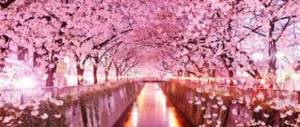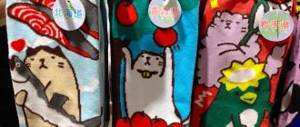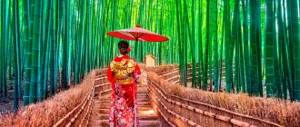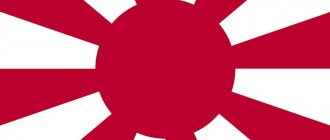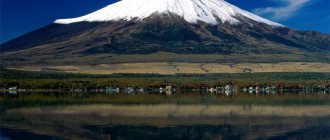HomeNews ATOR Bulletin
18.12.2020
In this country you can ski and sandboard in the desert, swim in the ocean and explore mysterious ancient cities underwater, go rafting on logs and jump with a parachute. We tell you what options for a fun and active holiday Japan offers.
LOOKING FOR JAPANESE ATLANTIS
Yonaguni, a small island in Okinawa Prefecture, is called the “Atlantis of Japan.” In the spring of 1985, in the coastal waters of Yonaguni, local diving instructor Kihachiro Aratake accidentally stumbled upon a strange object.
Not far from the shore he saw a huge stone monument. Its wide, level platforms, covered with patterns of rectangles and diamonds, turned into intricate terraces running down large steps. The edge of the monument went vertically down to a depth of 27 meters.
In 2001, a special scientific conference was held in Japan, where the majority of Japanese scientists supported the version that the found monument was a trace of an ancient civilization. However, the controversy continues to this day...
Tourists have the opportunity to form their own impression of the megalith: you can dive into the mysterious find and swim among its ruins.
The extreme nature of the underwater excursion will be given by the formidable underwater inhabitants - sharks and barracudas, the likelihood of encountering which is very high. But, according to local divers, predatory fish maintain neutrality towards tourists, without attacking them.
Solo game
Despite the fact that the Japanese are incredibly gregarious, they prefer to do some things alone.
For example, have fun with karaoke. Karaoke is one of the few purely Japanese inventions, which ranks 4th among the favorite pastimes of the Japanese (the first is restaurants, the second is traveling around the country, the third is driving). Kara means empty, and oke (more correctly: oke ) is an abbreviation for the word “orchestra”. Without a singer, the orchestra is empty, which is the perfect excuse to grab the microphone and join in. No one will hear you, so you can revel in the bliss all alone.
Japanese computer games are another “solo” entertainment. Yet both of these pastimes pale next to pachinko, the super-solo pastime at the arcade. While some prefer rooms that offer pink seating specifically for couples, most play alone. Numerous rows of Japanese men and women of all ages and appearance, magnificent in their detachment, sit in front of the slot machines, practically motionless. Their whole being is concentrated on controlling the levers. Eyes are burning, faces are absolutely impassive, time has stood still.
The real skill of the game lies in the ability to determine which machine in which gaming room and at what time of day will give you the best chance. Some are convinced that it is best to play right after opening, which explains the queues in front of pachinko early in the morning - until 10 am. Others believe that the new machines are more tractable than the old ones, and this makes the new casinos that have just opened more popular. Each player has his own formula for success and his own method.
Currently in Japan there are about 18 thousand halls with slot machines. In 1995, their owners earned more than the owners of the slot machine chain in Denmark, Norway and Finland combined.
Constant communication with others, the feeling of being part of a group is so psychologically difficult that the Japanese are looking for “solo” activities, where they would depend only on themselves - at least mentally, if not physically - and could forget about their social responsibilities. It doesn't matter that they only win a packet of detergent or a cassette with Frank Sinatra songs.
CATCHING THE WAVE
You can surf in the coastal waters of several prefectures in the south of the country: Miyazaki, Chiba, Shikoku, Yamanashi (Lake Motosu).
There are also calmer options, for example, SUP surfing, which is easier and more accessible for beginners and unprepared riders. This is worth coming to Okinawa for.
There is a unique opportunity to combine SUP and yoga on Ishigaki, and a relaxing SUP trip is also guaranteed on Miyajima.
CONQUER THE SKY
Skydiving in Japan is a real aesthetic pleasure. Take note: jumping from a height of 3500 m in the area of Mount Fuji, you can see the sacred mountain itself, the Sea of Japan, and also Amanohashidate, a sand spit in the north of Kyoto Prefecture, which is one of the three famous landscapes of the country.
The jumping season lasts from April to mid-June and from mid-July to November. For details, visit skydiving-kansai.com.
You can also test yourself in a 60-second free fall from a height of 4000 m near Tokyo. It offers views of Mount Tsukuba and Mount Fuji, Tokyo and the mountain range to the north. Cost – from 33,000 yen. More information at Skydivefujjoka.jp.
Another option to see Japan from above is on the island of Hokkaido, about an hour's drive from Sapporo. At a local center where foreign instructors work, you can get training and jump on your own or in tandem.
Beer gardens in Japan
From late May to early September, Japan's beer gardens open, attracting a weary crowd after work, school, or home.
It is typically an all-you-can-eat-and-drink menu , with beer , barbecue, and a buffet. A full evening of food and drinks usually costs between 3,500 and 4,000 yen (about $32).
Many beer gardens can be found on the roofs of large department stores, hotels or in parks. In Tokyo, the popular Forest Beer Garden is located in the outer garden of Meiji Jingu (Meiji Shrine). And in Kyoto, you can eat and drink under the spire of the Kyoto Tower at the top of the Kyoto Tower Hotel.
RAFTING ON THE RIVERS
A truly amazing rafting experience awaits everyone on the Kitayama River in Wakayama Prefecture, which is famous for its Kumano Kodo pilgrimage route and the most delicious plum wine in Japan. Fans of rafting will appreciate the “highlight” of this route: the descent along the Dorokyo gorge will be on wooden logs.
Rafting tours here run from May to September. Adult tickets start at 6,000 yen. For those who want less extreme, there is a light option: you can ride a boat through the gorge.
ENJOYING NATURE
Fans of ecotourism are recommended to go to Hokkaido to Shiretoko National Park, included in the UNESCO Natural Heritage List.
The name Shiretoko means “end of the earth” in the Ainu language of Hokkaido. These places have ancient relict forests that serve as habitat for the brown bear and Ezo deer.
It is also home to many species of rare seabirds and marine mammals.
EXPLORING CAVES AND ROCK PLATEAUS
The vast lands of the Akiyoshidai karst plateau near the city of Mine in Yamaguchi Prefecture are like nothing else in Japan. 350 million years ago, the warm southern sea splashed here, coral reefs grew...
When the water receded, the wind and rain began to carve an alien hilly landscape dotted with sharp stones from the limestone. Today it is a national park and a specially protected natural monument.
This is where Akiyoshido, a national treasure and the largest cave in Japan, is located.
Its length is 9 km, but only a one-kilometer path is accessible to tourists - with good lighting and paved paths. In this mysterious underground kingdom, accompanied by guides, you can walk among waterfalls, limestone terraces and pools filled with water, stalactites and stalagmites hanging from the ceiling.
Another local attraction is the rocky Akiyoshidai Plateau: bright green in spring and summer, reddish-yellow in autumn and covered with snow in winter.
In the old days, the residents of Yamaguchi grazed livestock here and grew pampas grass to cover their roofs. And at the end of winter, the old grass was burned to renew the pastures and prevent them from becoming overgrown.
This is a common practice in Japan, but here the Akiyoshidai Yaki fire festival, held on the third Sunday of February, is dedicated to this event. By the way, even before the pandemic, people came here wearing protective masks to help protect them from smoke and ash.
My car is my castle
For a Japanese, his car is his castle, and this is by no means an exaggeration. Buying a new home in Japan costs such a staggering amount of money that people compromise by buying a car instead of a house. A Japanese businessman can live in a tiny rented apartment, somewhere in the middle of nowhere, but at the same time he will be proud of his own latest model BMW - then he is at least half a happy person.
For many years, the vast majority of Japanese people preferred cars that were white—the color of virginity—as the epitome of purity. Nowadays tastes have become more varied, but the love for sparkling, spotless cars - be they red, black, or green - lives on. (The first thing the Japanese notice abroad is the pitiful appearance of the cars. To the Japanese eye they appear unwashed, poorly painted and completely unkempt. The Japanese heart suffers at the sight of these poor things.)
In addition to technical qualities, almost all Japanese car manufacturers pay a lot of attention to the needs of the drivers themselves. For example, the seat adjustment lever, which allows you to gently roll forward or backward, is located on the side of the seat. This is especially important for women who do not like to bend over to reach the metal adjustment knob placed between their legs.
LIVING IN A JAPANESE CAMPING
Japan is doing very well with camping. Even more than good.
There are more than three thousand such tourist accommodation facilities in the country for every budget and taste: from glamping with cottages or tree houses to affordable tent camps.
Prices for small campsites start from 400 yen per person to 3,000 yen for the entire site.
LET'S SKI
Skating in Japan has its own characteristics. Firstly, the number of tracks does not matter, because the main thing is what is located next to the tracks. For example, at the Rusutsu ski resort on Hokkaido, the slopes are located low, so that the slope actually runs among the trees.
Unlike Europe and Russia, it is not spruce and pine trees that grow on the slopes, but birch trees, due to which air pockets do not form around tree trunks. Moreover, due to the low mountains, there are no avalanches in Rusutsu, which freeride lovers will appreciate. Bonus: fantastic views of the volcano.
According to professionals, thanks to the soft, light and airy snow, skiing in Japan is more like surfing, which, by the way, is confirmed by the local ski equipment. Local boards are different from the usual ones: they are dovetailed and wider.
Unlike ski slopes in Europe and Russia, the slopes in Japan are open all day: you can ski from 9 am to 9 pm. There is also a difference in the marking of the routes: instead of the usual colors indicating the degree of difficulty, in Japan diamonds are used. One diamond is a difficult route, two diamonds are a very difficult route. Three diamonds - the track is intended for skiing only by professionals.
Mesmerizing mountain landscapes and thick snowfalls make skiing special at the Niseko ski resort, where approximately 15 m of snow falls per season. This is more than anywhere else in Japan!
Today Niseko is a popular skiing center both in Japan and throughout Asia. The main resorts are located on Mount Niseko Annupuri.
The largest of them (Grand Hirafu, Niseko Village and Annupuri) occupy the south-eastern slope and are connected to each other by ski slopes and bus routes. Well, the views of the huge Yotei volcano will be remembered by skiers for a long time.
Sports to the point of exhaustion
Good athletes are admired. But good results require considerable sacrifices. The school offers a choice of different sports beyond the program: baseball, football, basketball, tennis, table tennis, swimming, skiing, judo, karate, kendo. The goal of teachers is not pleasure. Sport should build character, instill discipline and teach obedience. The training is very tough. The sports hierarchy is merciless. The coach is the highest authority, the rest are “lined up” by seniority. The youngest wear the heavy equipment and do all the preparatory work for training and competition.
The quintessence of Japanese psychology is ekiden, long-distance relay running . Colleges, universities and companies have their own relay teams. The runners are exhausted, bringing themselves to complete exhaustion in order to quickly reach the place where their replacement is waiting. The team's belt, soaked with sweat, is passed from runner to runner. It is a symbol of unity, it unites the team and raises morale. The relay can last up to five hours until the last runner finishes. Along the entire route there are crowds of people waving and shouting encouragement to the runners. Those who cannot attend in person watch the competition on television, and every Japanese considers ekiden to be an exciting and exciting spectacle.
It is because of this spirit of self-sacrifice that Japanese companies are eager to hire young college graduates who have spent more time on the playing field than in the classroom. They know how to be polite and efficient, and these are qualities that are valued in corporations.
However, the situation is gradually changing. As Japan enters the new millennium, employers are starting to look for creative talent rather than docile fighters. And one more thing: as athletes begin to value themselves, and not engage in self-abasement and self-denial, Japan's successes in international competitions become more and more tangible.
Yuzuru Hany (Yuzuru Hany) - Japanese singles skater, 2014 Olympic champion in single skating, world champion (2014):
The older generation of Japanese plays golf or tennis. Firms and institutions hold well-organized competitions with gifts for the winners and return gifts for the losers. You just need to try very hard and not hit the hole the first time, because such luck can become a real disaster for you: you will have to give generous gifts to everyone who hears about it. This practice is a reflection of group psychology: you cannot stand out from the crowd and be lucky alone. Everyone should share the good fortune.
No matter what sport you play, you should look like a professional. You can't rent a couple of clubs and go play golf in your summer pants. If you are interested in cycling, then you should have the equipment of a winner of the international Tour de France race. Skiing also requires its own “outfit” - like a master of super-speed descent, and a Sunday game of tennis cannot take place without a pair of branded rackets and shorts, a shirt and a headband made in the latest fashion. The investment in any sport is so significant that only a few quit the sport after a few workouts, even if they don’t like it: the costs are too high to look “on the level.”
WE STUDY HISTORY AND CULTURE IN LITTLE-KNOWN CORNERS OF THE COUNTRY
For beautiful nature, seascapes and excellent cuisine, which is valued in the country, you should go to Sado Island or, as the Japanese themselves call it, Sadogashima. The island is located in Niigata Prefecture and can be reached by regular or high-speed ferry.
Sado is one of the most little-known parts of Japan. There are many sunny days here, there is no sweltering heat in summer, there are hot springs and beaches. But the main purpose of traveling to Sado is history and culture. There are 281 temples on the island, the most famous of which is the Hasedera Temple, famous for its statue of the goddess Kannon. By the way, you can visit Hasedera and make a secret request to Kannon at night.
There is also a traditional Japanese Noh theater on Sado. This theatrical art originated in Japan in the 14th century and was popular among the samurai and the aristocracy of the shogunate. Noh theater festivals are still held on Sado, and almost a third of all Noh theater scenes are staged on this island.
History fans will appreciate the excellent interactive History Museum, where exhibit dolls react to the movements of visitors, the ship museum, and the authentic fishermen's quarter. To remember your visit to Sado, you can send a postcard home from the local post office. Sado also has excellent sake breweries with tastings, wonderful orchards and many master classes.
North
Flowers in Furano, Hokkaido, Japan
When the hot summer air becomes too much, head to the milder climate of Hokkaido, Japan's northernmost island. Summer is ideal for hiking one of the prefecture's many mountains and exploring its remote national parks, many of which become inaccessible during the colder months. Yotei-Zan, Rishiri-Zan, Daisetsuzan National Park and Shiretoko National Park are just a few of the many trekking options.
Summer is when the alpine wildflowers appear and Furano's stunning flower fields come to life. At Tomita Farm, the landscape blooms in broad ribbons of pink, orange, yellow and purple from mid to late July.
Of course, you can just hang out in Hokkaido's capital Sapporo and relax. The Sapporo Summer Festival runs from late July to mid-August and is centered on a beer garden that seats about 13,000 people. The festival features traditional dancing and fireworks displays.

